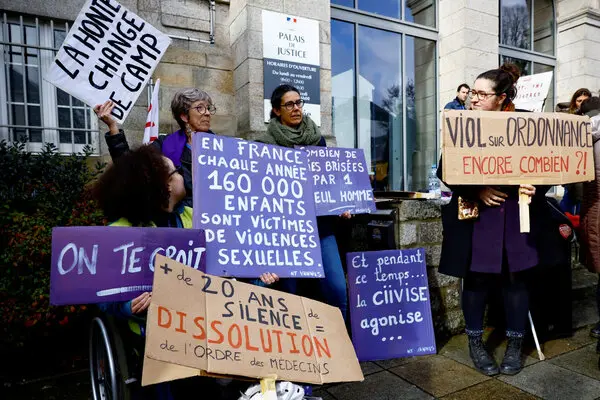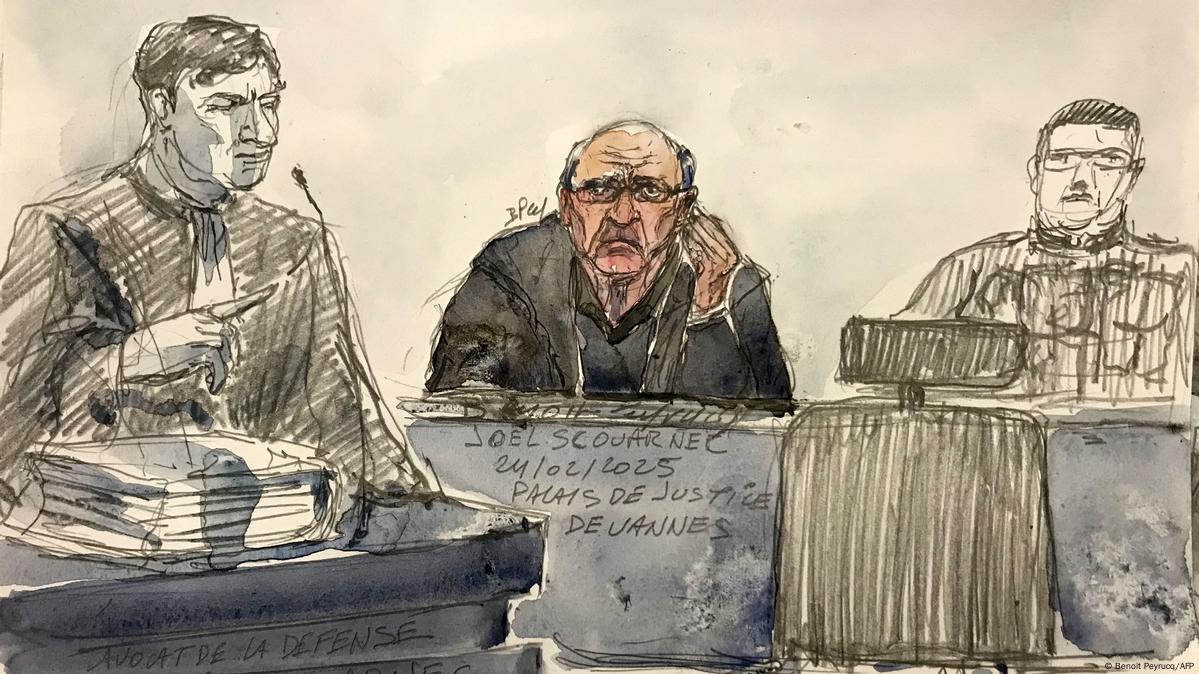
In a devastating case that has gripped communities around the world, a former doctor who sexually abused hundreds of children has been sentenced to 20 years in prison. This harrowing chapter reveals not only the depths of human cruelty but also the urgent need for systemic reforms, vigilant protections, and comprehensive awareness to safeguard vulnerable populations—especially children. As the court delivered a stern verdict, it sent a powerful message: no abuse, no matter how deeply concealed, will be tolerated, and justice will prevail.
The Horrific Crimes Behind Closed Doors
The revelation of the crimes shocked the nation and ignited widespread outrage. Over many years, this doctor exploited the inherent trust placed in medical professionals and abused his position to harm children who sought care and comfort. The victims, some as young as toddlers, endured unspeakable trauma—betrayed by someone they and their families believed would help protect them.
Such cases are particularly disturbing because they undermine one of society’s most fundamental relationships: that between caregiver and patient. When this trust is violated, it fractures not only individual lives but also the faith in institutions designed to serve and protect.
Investigations uncovered a chilling pattern of behavior. The doctor used his authority, knowledge, and the sanctity of the medical environment to mask his predatory actions. Manipulation, intimidation, and deception allowed him to continue abusing hundreds of children without early detection. This prolonged period of abuse exposed gaps in oversight mechanisms, raising critical questions about systemic safeguards.
The Courage of Survivors and the Quest for Justice
Justice in such cases is never easy. Survivors face immense challenges: reliving trauma during testimonies, battling societal stigma, and confronting emotional and psychological hurdles. The bravery displayed by hundreds of survivors, coming forward to share their stories in court, was pivotal to securing this verdict.
The prosecution meticulously pieced together a case with extensive evidence—medical records, forensic reports, witness accounts, and expert testimonies. This comprehensive approach ensured that the magnitude of the crimes was fully represented before the judiciary.
The defense sought to challenge and dilute the severity of the charges, but the overwhelming evidence left the court with no doubt. The resulting 20-year sentence reflects the judiciary’s firm stance on punishing such egregious offenses. It also symbolizes a commitment to deter future violations by sending a clear signal that perpetrators will be held accountable.
The Broader Impact on Victims and Communities
While the sentence is a significant step toward justice, the healing journey for survivors continues. The emotional and psychological scars from such abuse can persist for decades, affecting personal relationships, mental health, and overall quality of life.
Many survivors have courageously shared their stories publicly, breaking silence and helping to dismantle the stigma surrounding abuse. Their voices have fueled advocacy efforts, helping to raise awareness about the prevalence of such crimes and the necessity of accessible support services.
Communities, too, have rallied around survivors. Support networks—including counseling services, trauma-informed therapy, and peer groups—have become vital resources. These platforms provide safe spaces for healing and empowerment, reinforcing the message that victims are not alone and that their experiences are valid.
Unveiling Systemic Shortcomings and the Need for Reform
The prolonged duration of the abuse exposed significant systemic failures. Institutions responsible for safeguarding patients and children failed to detect and intervene, allowing the perpetrator to operate unchecked. This has led to widespread calls for reform across several dimensions:
Oversight and Monitoring
One glaring issue is the lack of rigorous oversight within healthcare institutions. Monitoring protocols for staff behavior, especially those with access to vulnerable populations, require strengthening. Regular audits, anonymous reporting mechanisms, and more proactive supervision are essential to preventing abuse.
Background Checks and Hiring Practices
Ensuring that medical professionals undergo thorough background checks before employment is critical. In some cases, inadequate vetting has allowed individuals with troubling histories to slip through the cracks. Enhanced verification processes and centralized databases could improve detection of red flags.
Training and Awareness
Healthcare workers must be trained extensively on professional ethics and recognizing signs of abuse. This includes empowering all staff members—doctors, nurses, administrative personnel—to identify suspicious behavior and understand the correct channels for reporting concerns.
Legal and Policy Frameworks
Legislators and regulatory bodies are under pressure to strengthen laws governing child protection and professional conduct. Proposals include stricter penalties, mandatory reporting laws, and protections for whistleblowers who expose abuse.
Prevention Through Education and Public Awareness
Prevention is the cornerstone of a safer future. Comprehensive educational initiatives targeting children, parents, educators, and healthcare providers are crucial to building awareness about abuse and its warning signs.
Children need age-appropriate information about body autonomy, consent, and how to seek help. Parents and caregivers should be equipped with resources to talk openly with children about safety and to recognize potential indicators of abuse.

Healthcare institutions are increasingly implementing training programs focused on ethical conduct and child protection. Public awareness campaigns, media coverage, and community workshops further enhance vigilance and responsiveness.
The Role of Technology and Innovation in Safeguarding Children
Advancements in technology offer promising tools for abuse prevention and detection. Secure digital platforms enable anonymous reporting, real-time monitoring, and data analytics to spot patterns of suspicious behavior.
Telemedicine and electronic health records, when combined with strict access controls and audit trails, can enhance transparency in patient care. Moreover, AI-driven analysis may assist in flagging irregularities that warrant further investigation.
However, technology must complement—not replace—human empathy, vigilance, and ethical responsibility.
Rebuilding Trust in the Medical Profession
Cases like this deeply damage public trust in healthcare. Rebuilding confidence requires sustained efforts by medical institutions, regulatory authorities, and professionals themselves.
Transparent communication, swift disciplinary action against offenders, and commitment to patient safety are vital. Medical boards are revising codes of ethics and reinforcing continuous education about professional boundaries and child protection.
Patient-centered care, where safety and dignity are prioritized, is fundamental to restoring faith in healthcare systems.
Societal Responsibility and Collective Vigilance
Protecting children is not solely the responsibility of parents or healthcare providers; it demands collective vigilance. Communities must foster environments where children feel safe and empowered to speak out.
Schools, religious institutions, sports clubs, and social organizations play critical roles in education, monitoring, and support. Partnerships among these entities, law enforcement, and social services enhance coordinated responses to abuse allegations.
Cultural shifts encouraging open dialogue about abuse and breaking down stigmas enable more survivors to come forward and receive help.
Supporting Survivors: Healing, Empowerment, and Justice
Survivors’ needs extend beyond legal victories. Trauma-informed care—addressing mental, emotional, and physical health—is essential. Access to specialized counseling, peer support groups, and holistic therapies facilitates recovery.
Empowering survivors to regain control over their lives is a critical dimension of healing. Educational opportunities, vocational training, and community reintegration programs contribute to rebuilding self-esteem and independence.
Legal justice provides validation, but societal recognition, empathy, and ongoing support underpin long-term recovery.
Global Lessons and the Way Forward
While this case is tragic, it offers important lessons globally. Child abuse in any context is a human rights violation requiring zero tolerance.
International cooperation on child protection standards, information sharing, and best practices strengthens collective ability to prevent abuse. Global awareness campaigns and funding for prevention programs amplify impact.
Countries must invest in research to understand risk factors, effective interventions, and survivor support to inform policy and practice.
Conclusion: A Somber Reminder and a Call to Action
The sentencing of the former doctor to 20 years in prison marks a milestone in justice but also a somber reminder of the work that remains. Children’s safety must be paramount in all sectors of society.
This case exposes vulnerabilities in systems meant to protect and care for the young and innocent. It compels governments, institutions, communities, and individuals to act decisively, collaboratively, and compassionately.
The hope is that through awareness, education, systemic reform, and collective vigilance, future generations will be safeguarded from such horrors. The resilience and courage of survivors inspire us all to build a world where trust is honored, and every child can thrive in safety.

